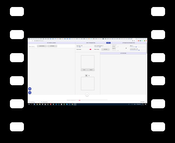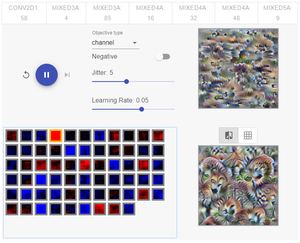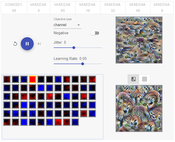Information
- Publication Type: Student Project
- Workgroup(s)/Project(s):
- Date: 2019
- Date (Start): April 2019
- Date (End): August 2019
- Matrikelnummer: 0372194
- First Supervisor: Manuela Waldner
Abstract
Excellent explanations of feature visualization already exist in the form of interactive articles, e.g. DeepDream, Feature Visualization, The Building Blocks of Interpretability, Activation Atlas, Visualizing GoogLeNet Classes. They mostly rely on curated prerendered visualizations, additionally providing colab notebooks or public repositories allowing the reader to reproduce those results. While precalculated visualizations have many advantages (directability, more processing budget), they are always discretized samples of a continuous parameter space. In the spirit of Tensorflow Playground, this project aims at providing a fully interactive interface to some basic functionality of the originally Python-based Lucid library, roughly corresponding to the concepts presented in the “Feature Visualization" article. The user is invited to explore the effect of parameter changes in a playful way and without requiring any knowledge of programming, enabled by an implementation on top of TensorFlow.js. Live updates of the generated input image as well as feature map activations should give the user a visual intuition to the otherwise abstract optimization process. Further, this interface opens the domain of feature visualization to non-experts, as no scripting is required.Additional Files and Images
Additional images and videos
 video:
Submission video for VISxAI workshop.
video:
Submission video for VISxAI workshop.
Additional files
Weblinks
- VISxAI URL
Explainable URL, accepted for the IEEE VIS 2019 Workshop on Visualization for AI Explainability. - VISxAI workshop
2nd workshop on Visualization for AI Explainability in Vancover, Canada, October 21, 2019. - LucidPlayground GitHub
Source code
BibTeX
@studentproject{sietzen-2019-wnn,
title = "Web-Interface for neural network feature visualization",
author = "Stefan Sietzen",
year = "2019",
abstract = "Excellent explanations of feature visualization already
exist in the form of interactive articles, e.g. DeepDream,
Feature Visualization, The Building Blocks of
Interpretability, Activation Atlas, Visualizing GoogLeNet
Classes. They mostly rely on curated prerendered
visualizations, additionally providing colab notebooks or
public repositories allowing the reader to reproduce those
results. While precalculated visualizations have many
advantages (directability, more processing budget), they are
always discretized samples of a continuous parameter space.
In the spirit of Tensorflow Playground, this project aims at
providing a fully interactive interface to some basic
functionality of the originally Python-based Lucid library,
roughly corresponding to the concepts presented in the
“Feature Visualization" article. The user is invited to
explore the effect of parameter changes in a playful way and
without requiring any knowledge of programming, enabled by
an implementation on top of TensorFlow.js. Live updates of
the generated input image as well as feature map activations
should give the user a visual intuition to the otherwise
abstract optimization process. Further, this interface opens
the domain of feature visualization to non-experts, as no
scripting is required.",
month = aug,
URL = "https://www.cg.tuwien.ac.at/research/publications/2019/sietzen-2019-wnn/",
}


